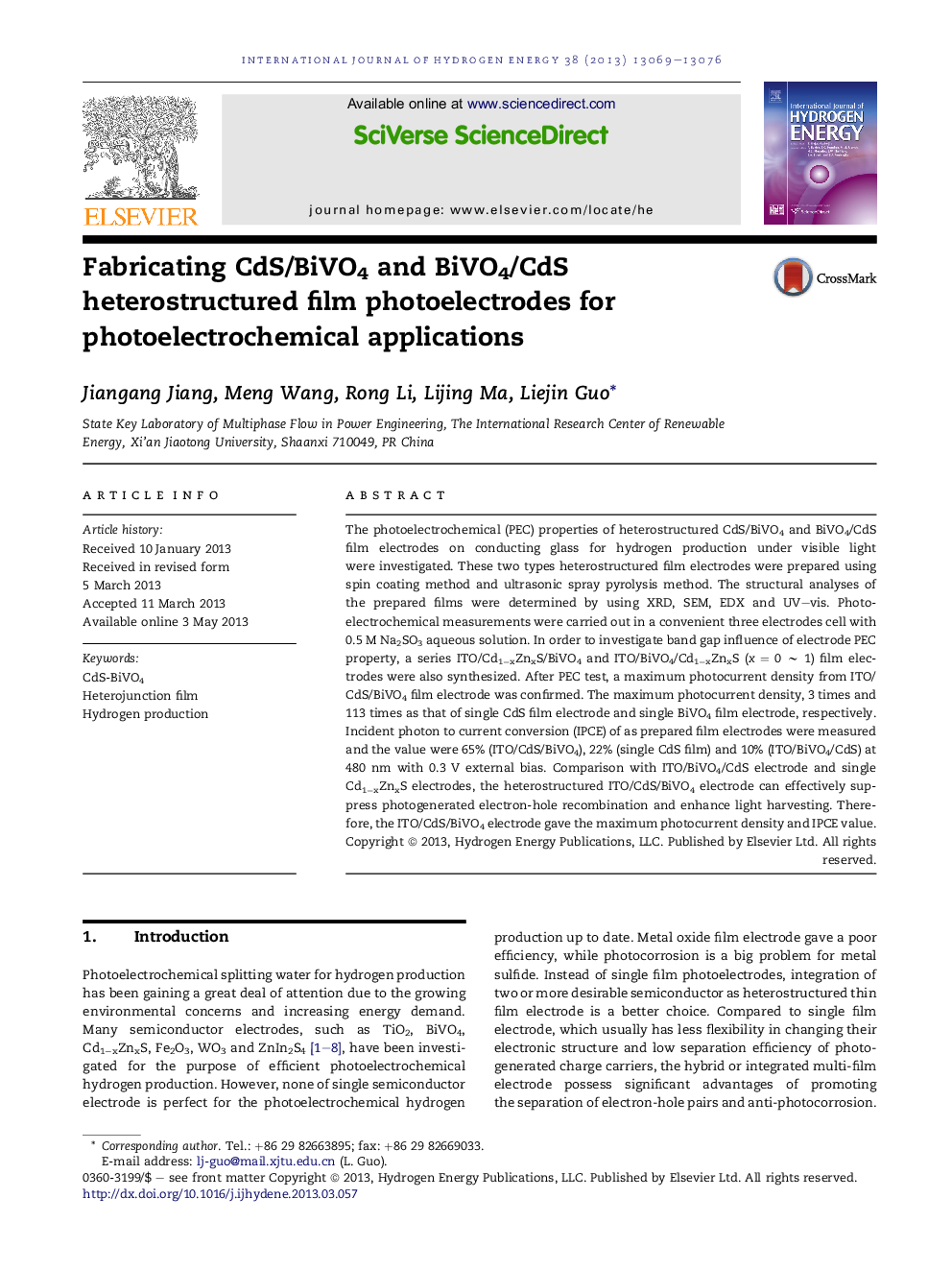| Article ID | Journal | Published Year | Pages | File Type |
|---|---|---|---|---|
| 7721690 | International Journal of Hydrogen Energy | 2013 | 8 Pages |
Abstract
The photoelectrochemical (PEC) properties of heterostructured CdS/BiVO4 and BiVO4/CdS film electrodes on conducting glass for hydrogen production under visible light were investigated. These two types heterostructured film electrodes were prepared using spin coating method and ultrasonic spray pyrolysis method. The structural analyses of the prepared films were determined by using XRD, SEM, EDX and UV-vis. Photoelectrochemical measurements were carried out in a convenient three electrodes cell with 0.5 M Na2SO3 aqueous solution. In order to investigate band gap influence of electrode PEC property, a series ITO/Cd1âxZnxS/BiVO4 and ITO/BiVO4/Cd1âxZnxS (x = 0 â¼Â 1) film electrodes were also synthesized. After PEC test, a maximum photocurrent density from ITO/CdS/BiVO4 film electrode was confirmed. The maximum photocurrent density, 3 times and 113 times as that of single CdS film electrode and single BiVO4 film electrode, respectively. Incident photon to current conversion (IPCE) of as prepared film electrodes were measured and the value were 65% (ITO/CdS/BiVO4), 22% (single CdS film) and 10% (ITO/BiVO4/CdS) at 480 nm with 0.3 V external bias. Comparison with ITO/BiVO4/CdS electrode and single Cd1âxZnxS electrodes, the heterostructured ITO/CdS/BiVO4 electrode can effectively suppress photogenerated electron-hole recombination and enhance light harvesting. Therefore, the ITO/CdS/BiVO4 electrode gave the maximum photocurrent density and IPCE value.
Keywords
Related Topics
Physical Sciences and Engineering
Chemistry
Electrochemistry
Authors
Jiangang Jiang, Meng Wang, Rong Li, Lijing Ma, Liejin Guo,
